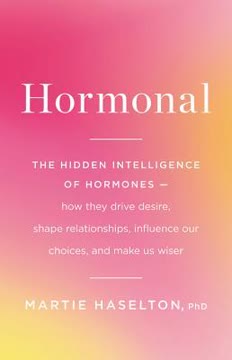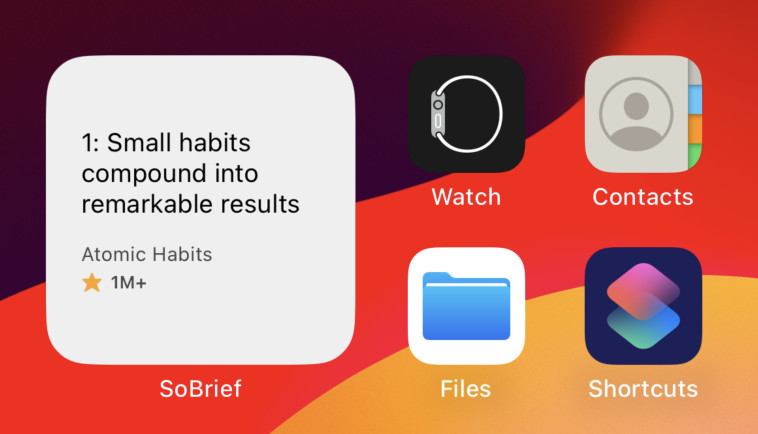Key Takeaways
1. Hormones: Not the Enemy, But Ancient Guides
In fact, women’s hormone cycles embody half a billion years of evolutionary wisdom.
Beyond Stereotypes. Hormones are often blamed for irrational female behavior, but this is a gross oversimplification. Both men and women have hormonal cycles, and these cycles are not a source of weakness but rather a product of evolution. They are not a curse, but a complex system that has helped us survive and thrive.
Evolutionary Wisdom. Female hormone cycles are not random fluctuations but rather a finely tuned system that has evolved over millions of years. These cycles influence everything from mate selection to competitive urges, and they are a crucial part of our biological heritage.
- Hormones control reproduction, the powerful engine of natural selection.
- It is unlikely that hormones would not guide our behavior in some way.
- Our hormones have the potential to give us pleasure, guide us through life, and make us all the wiser.
Call to Action. We need more information about women's hormones and their behavior. Research has been stunted by the notion that men could be considered the "default sex" for biomedical information. We must know more so that we can make the best decisions at every phase of life.
2. Estrus: More Than Just "Heat," It's Strategic Desire
During estrus, it’s clear that the female actively solicits sex with a male of her choosing. She tests him to see if he is fit enough to follow. She shows a preference for a particular type of male. She picks him.
Beyond the Frenzy. Estrus, often associated with animals in "heat," is not simply a period of indiscriminate sexual desire. It's a strategic phase where females actively seek out mates with specific traits, not just any male. This is a time of heightened selectivity, not just heightened desire.
Active Choice. Females are not passive recipients of male advances. They actively solicit sex with males of their choosing, testing them to see if they are fit enough to follow. This is a crucial point:
- Females seek to elicit chase from a male.
- Females prefer and seek out dominant males.
- Females are exceedingly selective.
Evolutionary Strategy. Estrus is not just about reproduction; it's about making smart reproductive decisions. Females are not simply seeking sperm; they are seeking the best possible genetic material for their offspring.
3. The Ovulation Cycle: A Symphony of Hormones
The ovulation cycle is generally described as having two distinct phases—the follicular phase, which starts on Day 1 (the first day of a menstrual period), and the luteal phase, which is the second half, from ovulation (on or about Day 14 or 15, assuming a twenty-eight-day cycle) until Day 28.
Hormonal Players. The ovulation cycle is a complex interplay of hormones, including estrogen, progesterone, follicle-stimulating hormone (FSH), luteinizing hormone (LH), and gonadotropin-releasing hormone (GnRH). These hormones rise and fall in a carefully ordered sequence, each playing a specific role in the cycle.
- Estrogen: The Big One, responsible for female characteristics and sexual motivation.
- Progesterone: The Double Dealer, preparing the uterus for pregnancy and suppressing immunity.
- FSH: Stimulating the maturation of the egg-containing follicle.
- LH: The Bungee Jumper, necessary for ovulation.
- GnRH: The Stage Manager, running instructions between the brain and the ovaries.
Two Phases. The cycle is divided into two main phases: the follicular phase (Day 1-14), when the egg matures, and the luteal phase (Day 15-28), when the uterus prepares for pregnancy. These phases are marked by distinct hormonal shifts that influence a woman's body and behavior.
No Moon Magic. Despite popular belief, the moon and the menstrual cycle have little to do with each other beyond their length. The cycle is driven by hormones, not lunar forces.
4. Mate Selection: Good Genes vs. Good Dads
In parental investment theory, the prediction is that women (the high investors) will be very selective when choosing sex partners.
Two Types of Males. Women have evolved to seek out two types of males: those with good genes (Mr. Sexy) and those who will be good providers and partners (Mr. Stable). These preferences are not always aligned, and women often make trade-offs between the two.
- Mr. Sexy: Dominant, symmetrical, and possessing high-fitness genes.
- Mr. Stable: Kind, caring, and willing to invest in offspring.
Parental Investment Theory. Women, as the higher investors in reproduction, are more selective in choosing mates. They seek out males who can contribute to the success of their offspring, either through good genes or through resources and support.
Strategic Choice. Women's mate preferences are not random; they are strategic and adaptive. They are designed to maximize the chances of reproductive success and offspring survival.
5. Mate Shopping: Hormonal Nudges in Action
When fertile, we choose to be active and feel primed to mate; when not, we put up our feet, binge-watch Netflix, and eat some snacks.
The Mate-Search Effort. During peak fertility, women experience a surge in physical and social activity, a phenomenon known as the "mate-search effort." This includes increased motivation to go out, socialize, and meet potential partners.
- Women walk more midcycle.
- Women's calorie consumption drops.
- Women are more likely to go to clubs and parties.
Strategic Trade-Offs. Women prioritize mating over other activities during peak fertility. They may reduce their calorie intake and increase their physical activity, as if they are making a trade-off between feeding and breeding.
Not Just Sex. The mate-search effort is not just about having sex; it's about finding the right partner. Women are not simply seeking any male; they are seeking males with specific traits that will benefit their offspring.
6. Ovulation Cues: Subtle Signals, Powerful Effects
Women appeared to prefer certain male features when fertile within their cycles.
Beyond the Obvious. Human ovulation is concealed, but women still emit subtle cues that can be detected by others. These cues include changes in scent, voice, and facial features.
- Scent: Women's body odor is more attractive to men during high fertility.
- Voice: Women's voices rise in pitch during high fertility.
- Face: Women's faces are rated as more attractive during high fertility.
Strategic Signals. These cues are not always consciously controlled, but they serve a purpose: to attract potential mates and signal fertility. They are a form of hormonal intelligence, guiding women's behavior and influencing how they are perceived by others.
Not Just for Men. Women can also detect ovulation cues in other women, and this may trigger competitive behaviors. These cues are not just about attracting mates; they are also about navigating social relationships.
7. Pregnancy and Motherhood: Hormonal Transformation
During pregnancy, the production of estrogen and progesterone continues, while FSH and LH are inhibited, thereby preventing ovulation during pregnancy.
Hormonal Overhaul. Pregnancy is a period of profound hormonal change, with levels of estrogen and progesterone soaring to unprecedented heights. These hormones not only support fetal development but also transform a woman's body and brain.
- Progesterone: Suppresses the immune system to protect the fetus and reduces inflammation.
- Estrogen: Causes changes in the body and brain, including increased sensitivity to scent and taste.
- Prolactin: Prepares the body for lactation and promotes maternal bonding.
Mommy Mind. Pregnancy can cause a slight decline in memory and cognitive function, but it also enhances other abilities, such as sensitivity to danger and the ability to read social cues. This is not a sign of weakness but rather a strategic shift in priorities.
Nesting Instinct. Pregnant women often experience a strong urge to prepare their homes for the arrival of their babies. This nesting instinct is a hormonal response designed to create a safe and secure environment for offspring.
8. Menopause: A New Chapter, Not the End
Menopause provided a way for ancestral females to remain productive—beyond the reproductive years.
Beyond Fertility. Menopause marks the end of a woman's reproductive years, but it is not the end of her hormonal life. It is a new chapter with its own unique challenges and opportunities.
- Menopause is not a disease but a natural transition.
- Women can live for decades after menopause.
- Menopause is a time of freedom and new experiences.
Grandmother Hypothesis. Menopause may have evolved to allow women to focus on caring for their grandchildren, ensuring the survival of their genetic legacy. Grandmothers play a crucial role in providing resources and support to younger generations.
Shifting Priorities. As women move through menopause, their hormonal priorities shift. They may become less focused on mating and more focused on social relationships and community.
9. Hormonal Contraception: Disrupting the Cycle, Not Destiny
If a woman’s sexual activity is not directly regulated by hormones, what about her desire for sex?
The Pill's Impact. Hormonal contraception, particularly the combination pill, disrupts the natural hormonal cycle and suppresses ovulation. This can have a variety of effects on women's behavior and preferences.
- The pill can reduce or eliminate estrous desires.
- The pill can alter mate preferences.
- The pill can impact relationship satisfaction.
Not a Simple Story. The effects of hormonal contraception are complex and not fully understood. It is not simply a matter of "turning off" a woman's hormones.
- The pill does not make women choose genetically incompatible partners.
- The pill does not necessarily make women less attractive.
- The pill does not necessarily ruin relationships.
Individual Choice. Women should be empowered to make informed decisions about their reproductive health, including the use of hormonal contraception. The key is to understand the potential effects and make choices that align with individual goals and values.
10. Hormonal Intelligence: Understanding and Embracing Our Nature
We need to know more about the impact of hormones on our relationships—including sexual and romantic relationships and our relationships with friends and kin.
Beyond Simple Explanations. Hormonal intelligence is not about being controlled by hormones; it's about understanding how hormones influence our behavior and making informed choices. It's about recognizing the complex interplay between biology and environment.
Empowerment through Knowledge. By understanding our hormonal cycles, we can make better decisions about our relationships, our health, and our lives. We can use our hormonal intelligence to navigate the challenges and opportunities that come our way.
Embrace the Complexity. Women are not simply "hormonal"; they are complex beings with a rich biological heritage. We should embrace our hormonal intelligence and use it to live our lives to the fullest.
Last updated:
FAQ
What’s Hormonal: The Hidden Intelligence of Hormones by Martie Haselton about?
- Exploring hormonal intelligence: The book investigates how hormones drive desire, shape relationships, influence choices, and contribute to women’s wisdom, challenging the stereotype that hormones simply cause irrational behavior.
- Female hormonal cycles: Haselton explains how women’s hormone cycles affect mating desires, competition, pregnancy, motherhood, and menopause, presenting hormones as a form of evolved “hidden intelligence.”
- Bridging biology and feminism: The author advocates for a “new Darwinian feminism” that respects biological differences while empowering women, emphasizing the importance of understanding hormonal influences.
- Scientific and social context: The book addresses the historical neglect of female hormone research and calls for more inclusive science to better understand women’s health and sexuality.
Why should I read Hormonal by Martie Haselton?
- Empowering knowledge: Understanding hormonal intelligence helps women make informed decisions about their bodies, relationships, and health across all life stages.
- Debunking myths: The book challenges stereotypes about women being “too hormonal,” showing that hormonal effects are strategic and adaptive, not chaotic or irrational.
- Scientific insight: Haselton offers a comprehensive, research-based perspective on female sexuality, mate choice, and hormonal cycles, filling gaps left by male-centered research.
- Cultural relevance: The book connects evolutionary biology with contemporary issues like feminism, healthcare disparities, and the politics of female biology.
What are the key takeaways from Hormonal by Martie Haselton?
- Hormones as intelligence: Female hormones guide behavior in adaptive, strategic ways, not simply causing mood swings or irrationality.
- Cycle-driven behaviors: Women’s desires, competitiveness, and social behaviors shift across the menstrual cycle, with evolutionary roots in mate selection and risk management.
- Empowerment through understanding: Recognizing hormonal influences allows women to make conscious choices, rather than being at their mercy.
- Need for inclusive research: The book highlights the consequences of the gender gap in biomedical research and calls for more female-focused studies.
What is “hormonal intelligence” according to Hormonal by Martie Haselton?
- Definition: Hormonal intelligence is the evolved ability of women to use hormonal fluctuations strategically to navigate mating, parenting, and social challenges.
- Not loss of control: Rather than causing irrationality, hormones work with the brain to help women make strategic decisions about mating, competition, and social interactions.
- Life-course perspective: Hormonal intelligence operates across a woman’s lifetime, adapting to phases like puberty, pregnancy, and menopause.
- Empowerment through knowledge: Understanding hormonal intelligence helps women interpret their desires and behaviors in context, rather than seeing them as uncontrollable.
How do female hormonal cycles work, as explained in Hormonal by Martie Haselton?
- Two main phases: The menstrual cycle has a follicular phase (Day 1 to ovulation, rising estrogen) and a luteal phase (post-ovulation, dominated by progesterone), each influencing behavior and physiology differently.
- Estrus and ovulation: Estrus is the phase of peak fertility when women are hormonally primed to seek high-quality mates; humans have concealed ovulation but still show subtle estrous behaviors.
- Behavioral effects: Estrogen peaks increase attractiveness, competitiveness, and mate-seeking, while progesterone promotes social bonding, disease avoidance, and calmness.
- PMS and menstruation: Premenstrual syndrome may be linked to progesterone withdrawal and serves strategic evolutionary purposes, while menstruation involves shedding the uterine lining.
How do hormones influence female sexual desire and mate choice in Hormonal by Martie Haselton?
- Cycle-dependent preferences: Women’s sexual desire fluctuates, with increased attraction to masculine, dominant, and symmetrical men during peak fertility, reflecting a preference for “good genes.”
- Extended sexuality: Humans have sex outside fertile periods, supporting pair-bonding and long-term relationships with nurturing partners.
- Trade-offs in mate choice: Women balance desires for genetically fit “Sexy Cads” during estrus with stable, nurturing “Good Dad” partners for long-term investment.
- Behavioral signals: Women dress more attractively, flirt more, and compete with other women more intensely during high-fertility phases.
What evidence does Hormonal by Martie Haselton present about human ovulation cues?
- Scent changes: Women’s body odors become more attractive and “sexier” at high fertility, as confirmed by hormone testing and male raters.
- Voice pitch: Women’s voices rise in pitch near ovulation, and higher-pitched voices are rated as more attractive.
- Behavioral shifts: Women dress more attractively, flirt more, and engage in more social and competitive behaviors during fertile phases.
- Concealed ovulation: Human ovulation cues are subtle and “leak” out as by-products of hormonal changes, balancing concealment with signaling.
How does hormonal contraception affect hormonal intelligence and mate preferences in Hormonal by Martie Haselton?
- Estrus suppression: Combination estrogen-progestin contraceptives suppress ovulation and related hormonal fluctuations, effectively turning off the “estrous switch.”
- Mate choice impact: Some studies suggest women on the pill may prefer genetically similar partners, but Haselton’s research found women on the pill were more genetically dissimilar from their partners.
- Relationship dynamics: Discontinuing the pill can alter women’s perceptions of partner attractiveness, especially if the partner is rated as less attractive.
- Complex effects: The impact of contraception on mate choice and behavior is nuanced, varying by hormone formulation and individual context.
What are the evolutionary origins and functions of female desire and estrus in Hormonal by Martie Haselton?
- Ancient roots: Estrus and hormonal cycles evolved over 400 million years ago, with estrogen receptors becoming sexually dimorphic in vertebrates.
- Shared animal traits: Many animals exhibit estrous behaviors, such as increased sexual motivation and selectivity during fertile periods, which humans also display in subtler forms.
- Human uniqueness: Humans evolved extended sexuality and pair-bonding, allowing sex outside fertile windows and complex mate choice strategies.
- Evolutionary trade-offs: Female sexual behavior reflects trade-offs between seeking “good genes” during estrus and securing stable partners for offspring care.
How does Hormonal by Martie Haselton address the stereotype of women being “too hormonal”?
- Historical context: The book traces how women have been unfairly labeled as “hormonal” to dismiss their behavior and limit their roles.
- Scientific rebuttal: Haselton argues that this stereotype is a gross oversimplification that ignores the complex, strategic roles hormones play in female behavior.
- Double standard: Men also have hormonal cycles (e.g., testosterone fluctuations) but are not stigmatized similarly, highlighting societal bias.
- Reclaiming the term: The author encourages celebrating hormonal influences as a source of pleasure, guidance, and wisdom rather than shame.
What does Hormonal by Martie Haselton say about female competition and risk management across the cycle?
- Intrasexual competition: Women become more competitive with other women during high fertility, including harsher judgments and increased desire to appear attractive.
- Risk sensitivity: Women’s internal alarm systems heighten during fertile phases, leading to cautious behavior in potentially dangerous situations.
- Behavioral trade-offs: Women balance risk-taking (e.g., flirting, socializing) with risk avoidance to maximize reproductive success and safety.
- Resource competition: Fertile women may be less cooperative and more willing to withhold resources from attractive rivals.
What are the implications of the gender gap in biomedical research, according to Hormonal by Martie Haselton?
- Male default bias: Historically, medical and animal research has focused on males, excluding females due to perceived hormonal “messiness,” leading to gaps in understanding female health.
- Consequences: This bias delayed recognition of female-specific conditions and treatments, such as appropriate birth control dosages and female sexual dysfunction therapies.
- Policy changes: Recent mandates require inclusion of both sexes in research unless justified, aiming to improve healthcare outcomes for women.
- Call to action: The book stresses the need for more female-focused research to close knowledge gaps and develop better treatments and interventions.
Review Summary
Hormonal receives mixed reviews, with ratings ranging from 1 to 5 stars. Many readers find it informative and eye-opening, praising its accessible explanation of women's hormonal cycles and their effects on behavior. Some appreciate the evolutionary perspective and the author's attempt to reclaim the term "hormonal." However, critics argue the book is repetitive, overly focused on reproduction, and lacks depth in scientific content. Some readers also note the book's heteronormative approach and limited discussion of transgender issues. Overall, opinions vary on the book's effectiveness in empowering women through hormonal knowledge.
Similar Books
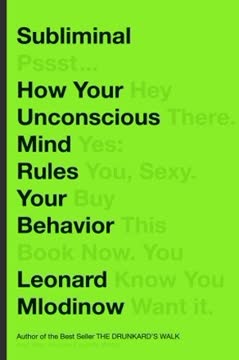
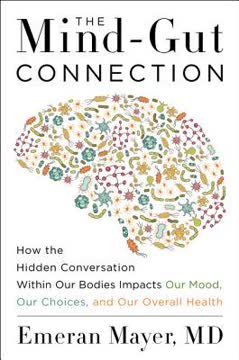
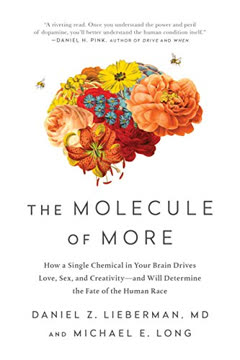
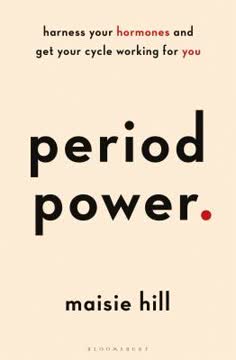
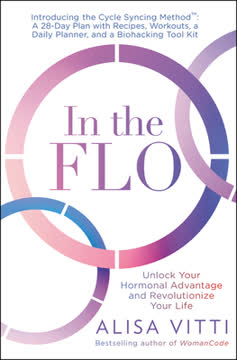
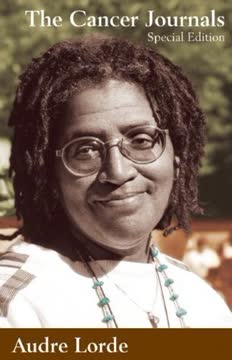
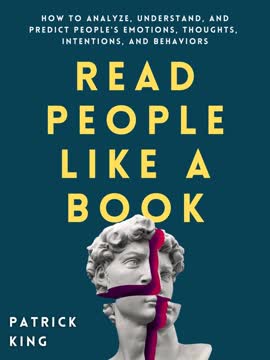
Download PDF
Download EPUB
.epub digital book format is ideal for reading ebooks on phones, tablets, and e-readers.
